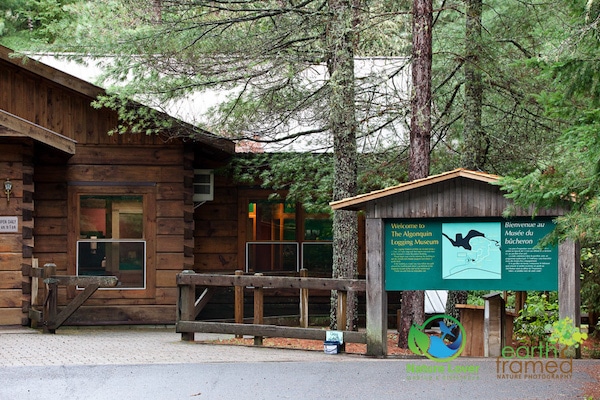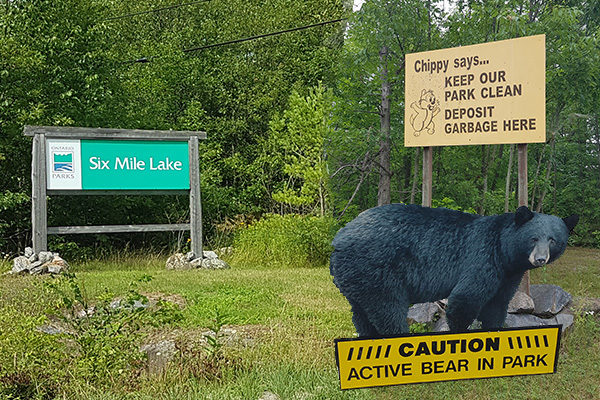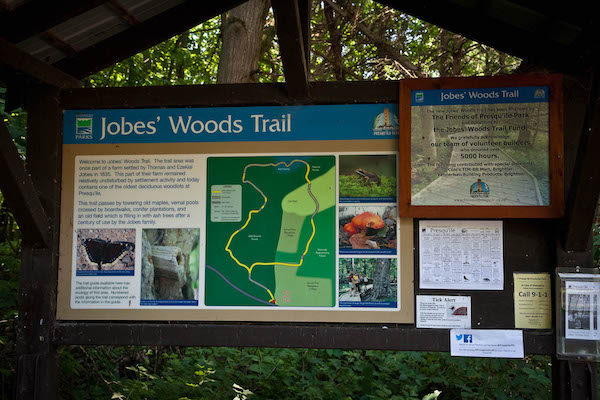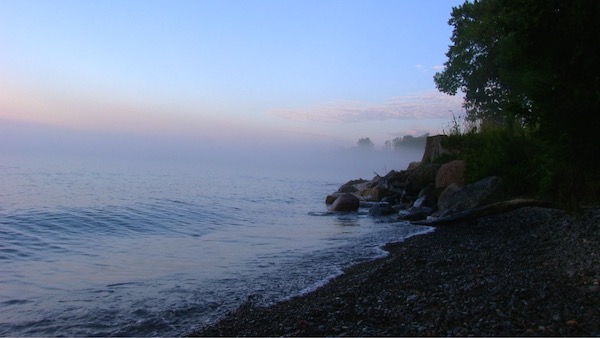Situated near the east gates of Algonquin Park is an outdoor logging museum. Along a 1.3 kilometre trail visitors wwill see equipment, housing, barns and vehicles used during the early logging days in Algonquin Park. We like to take the trail on rainy days, or after heavy rain because the trail rarely ever gets muddy, nor are there huge puddles to walk through. It’s also a great trail to spot wildlife!
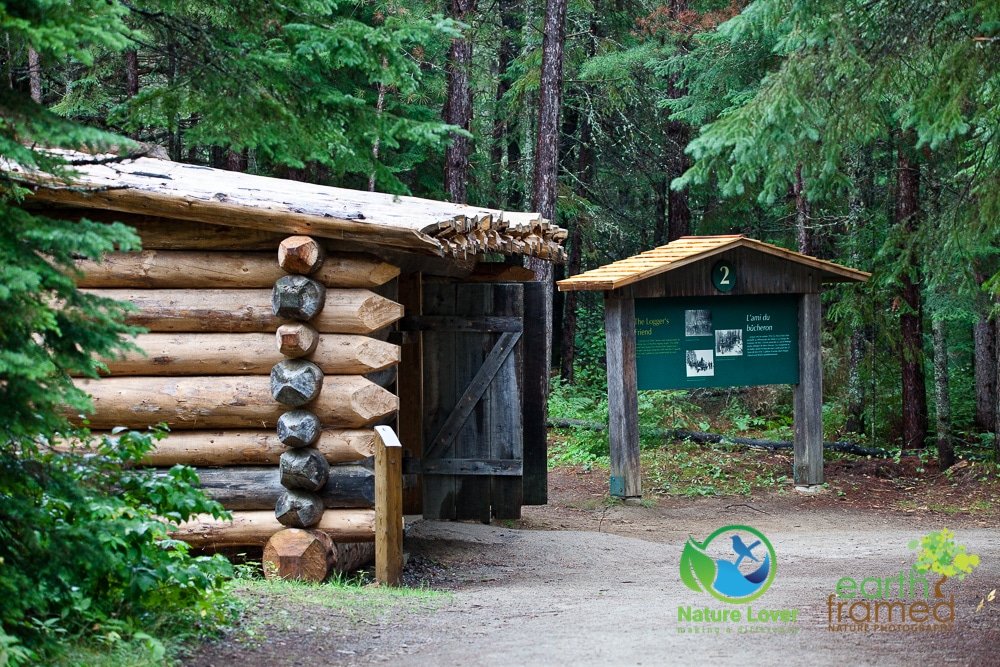
Full-sized buildings are found along the trail and visitors are encouraged to explore each one of them. Be sure to get a good look at the construction of the buildings, both inside and out. Often a team of builders would come to the logging site first. They would select the campsite and then construct the necessary buildings using only the materials they could find. 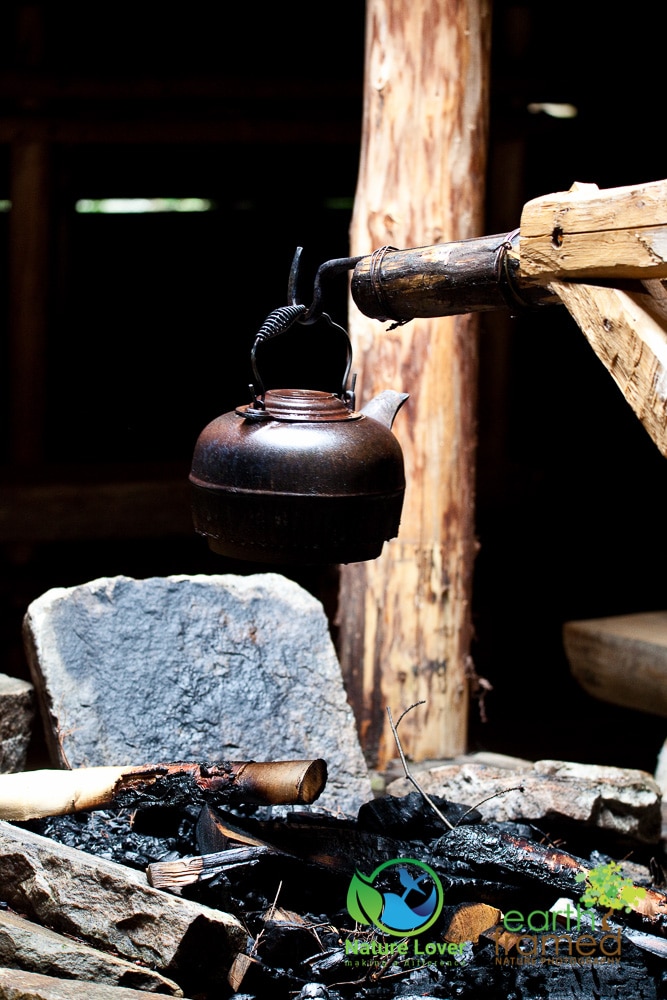
In the main lodging building there was a large fireplace in the middle of the one room building. All along the walls there were narrow bunk beds for the loggers and in some situations they would even double up! 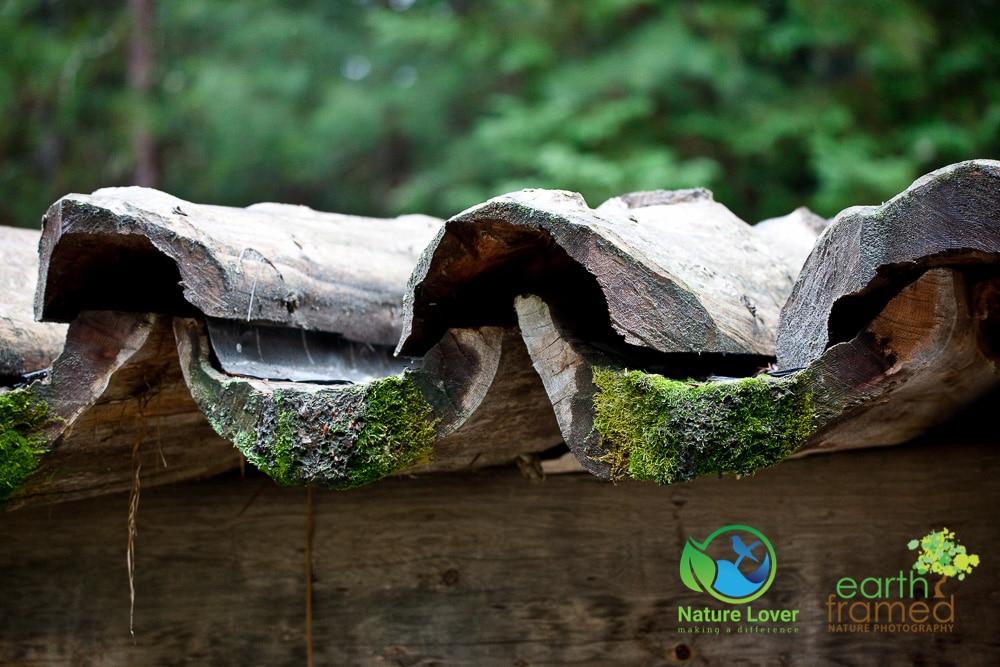
The roof of the buildings were ingenious but would have require a lot of work to create. By having he logs hollowed out and then over lapping, the roof had built in eaves. 
One of the pieces of equipment on display is this road icer, or water tanker. Oxen or horses would be hooked up to the front of the device and barrels of water would be lifted and poured into the reservoir. Then, the animals would pull the sleigh along the road to spread the water over the snow which would then freeze. This allowed other equipment to easily move along the roads in the winter, especially log sleighs. 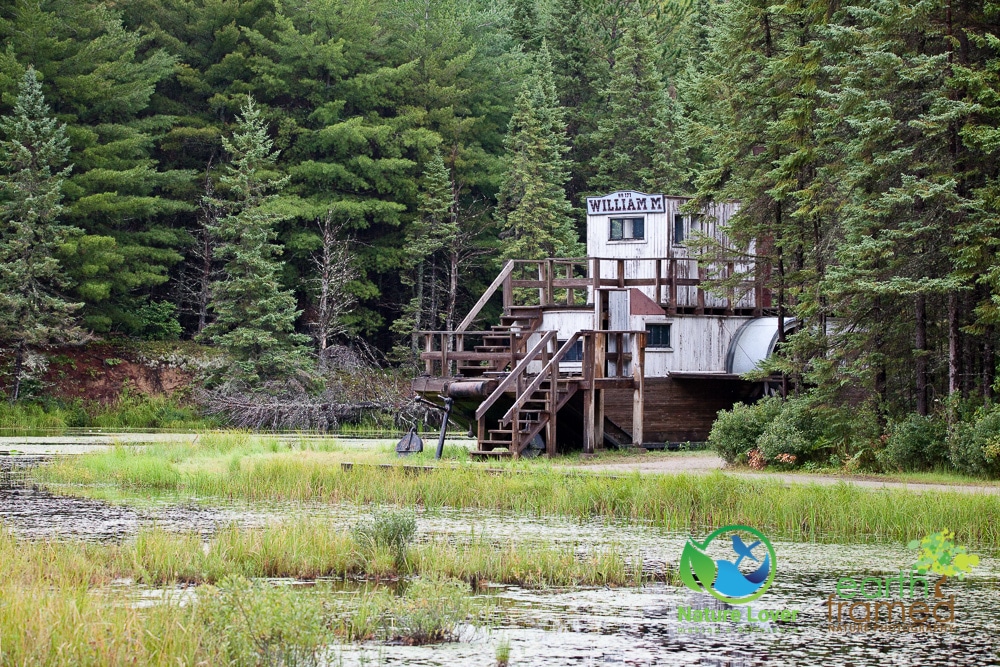
Set beside one of the ponds is a tugboat and winch combination, otherwise known as an alligator. This 1905 machine used a steam-powered winch and paddlewheels to move a log boom from one side of a lake to the other, and even over land, if necessary. The alligator on site is refurbished but everything about it is genuine to its original specifications. 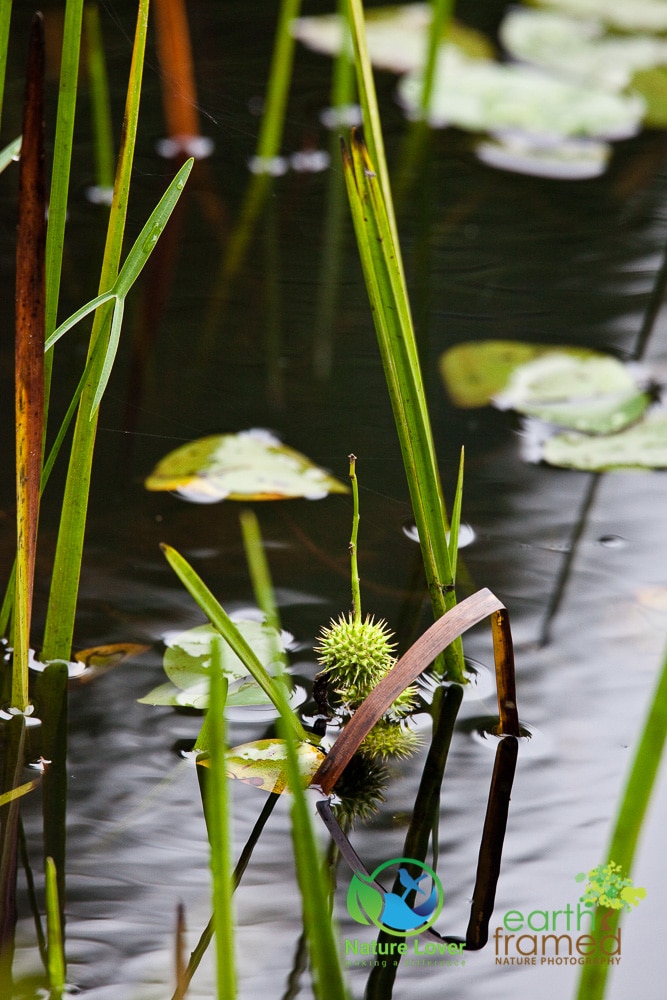
The ponds are filled with wetland plants and animals. If you walk the trail quietly at dusk you may be lucky to spot beavers feeding on lilies, a variety of waterfowl or frolicking river otter. 
Maya sat quietly along the pond edge while we surveyed the area for wildlife and signs of active beaver lodges. 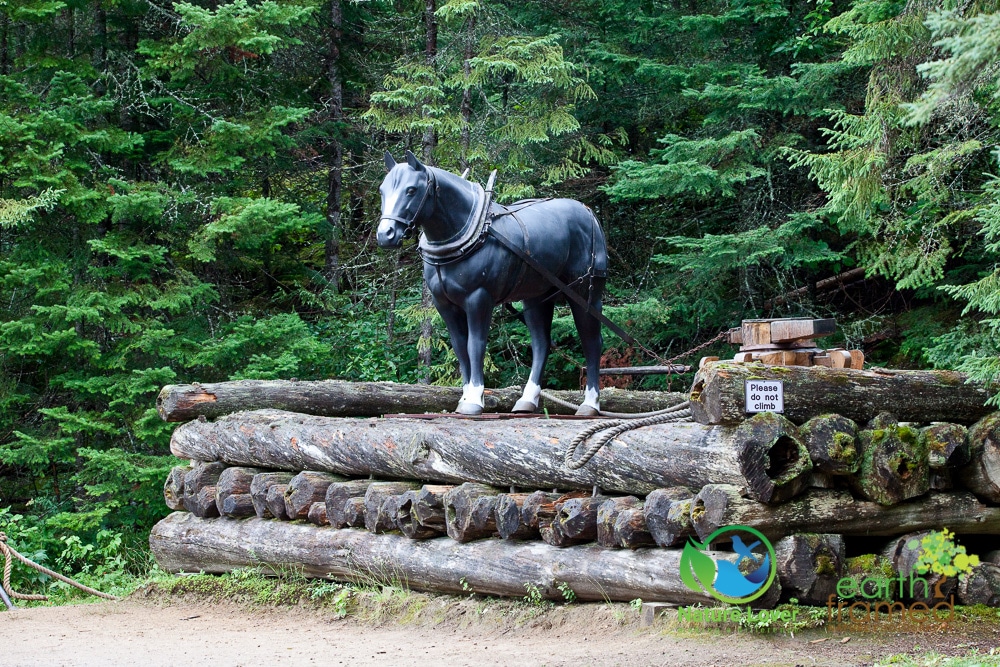
For display purposes, this cadge crib is on the shore but would have been found floating in the water. This was the first solution for moving log booms through water. Two large working horses would have been hooked up to a wooden spool with a rope. The horses would then circle the spool to either wind or unwind the rope in order to move the raft, and the logs, across the lake. Definitely not as easy or efficient as the alligator.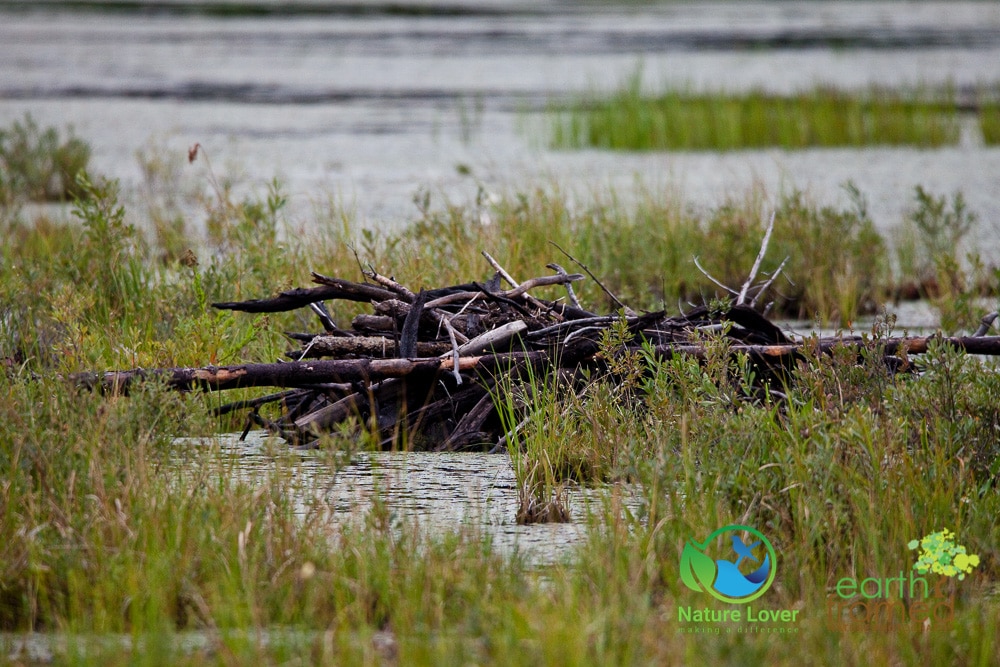
The Logging Museum trail is one of the main places we ever consistently see beavers active. Look for piles of sticks, branches and mud and then see if there is any grass growing on it. If there is grass, it’s old and the beavers have since moved on. 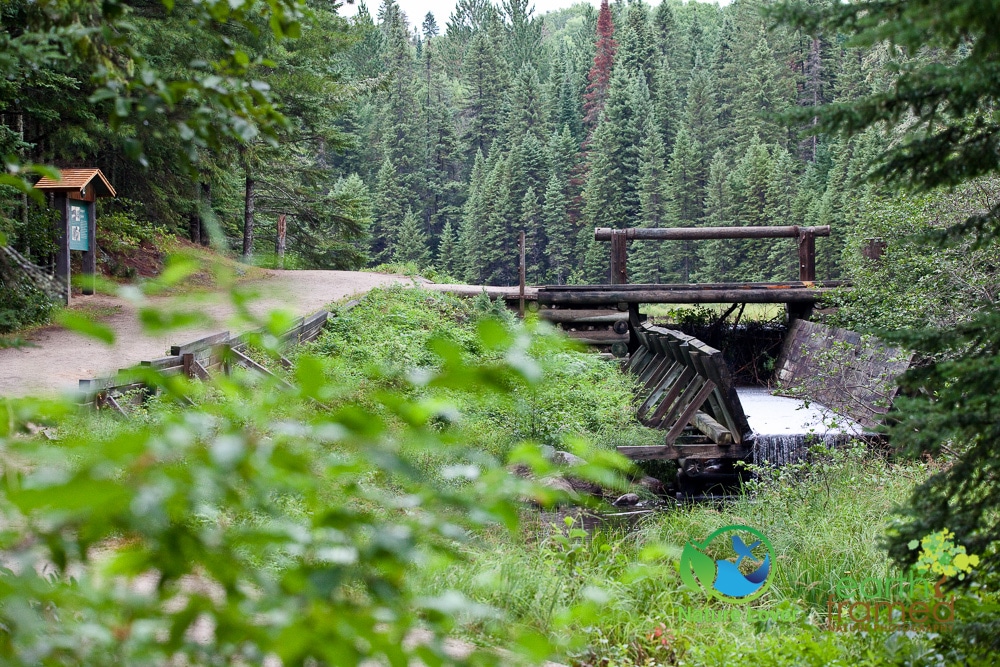
This reconstruction of a timber slide was built in 1991. It is an example of the many small chutes that would have been used throughout the park. These chutes were used to keep water levels high enough for logs to keep moving downstream.

Triangles aren’t just used in music! Outside of the cook shack was a large metal triangle used to call the men for meals. The cookery was one of the few buildings that actually had windows. This is a more modern building that was only used for meals with sleeping quarters being in a separate building. These camps would serve bread, corned beef, white beans, a variety of vegetables, and tea.
When you finish walking the trail, be sure to stop into the museum. Inside you’ll find small replicas of camp setups, a bathroom, a small souvenir shop with books, snacks and such. There is also a video that runs regularly throughout the day.


